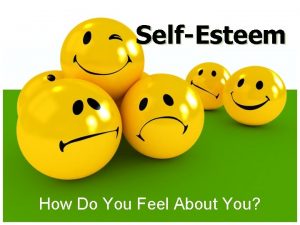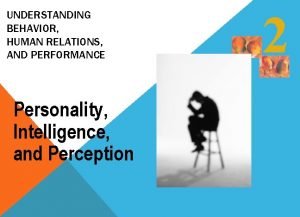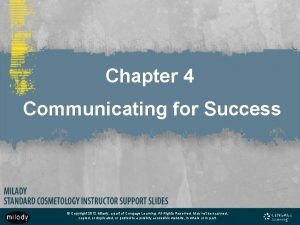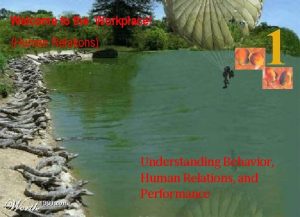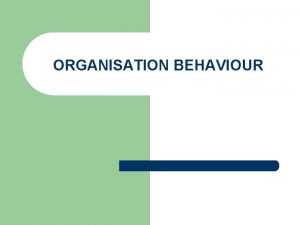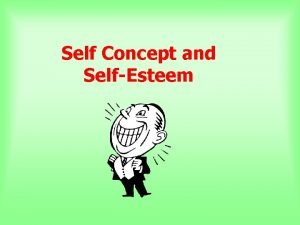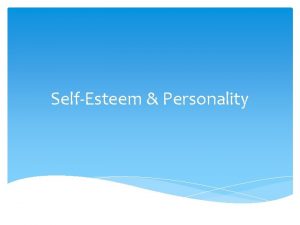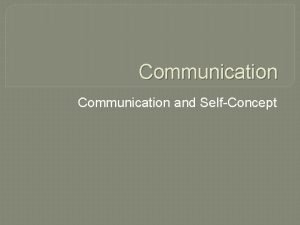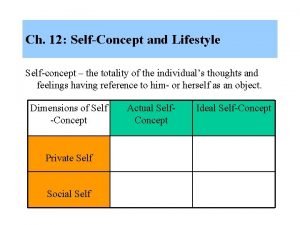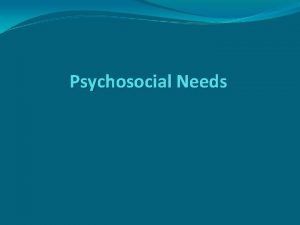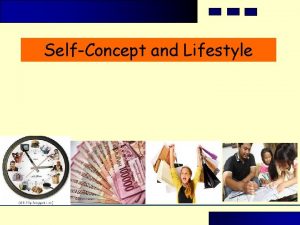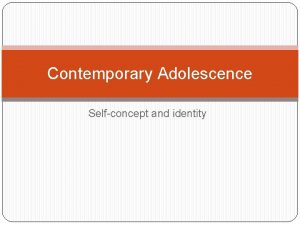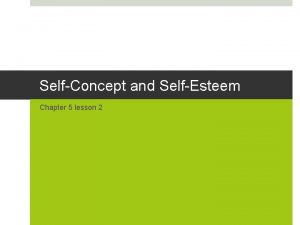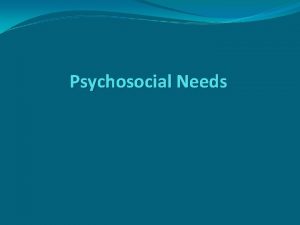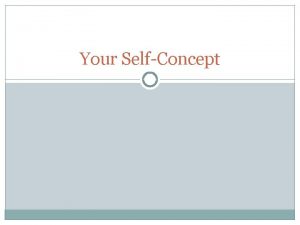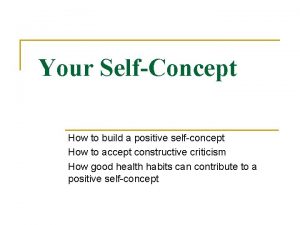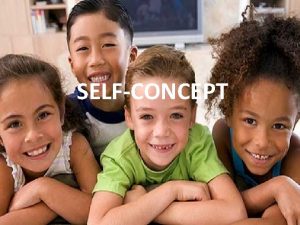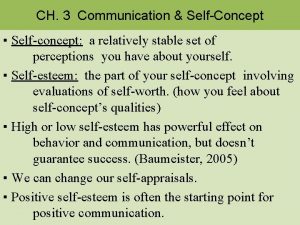SelfConcept and SelfEsteem in Human Relations Chapter 2























- Slides: 23

Self-Concept and Self-Esteem in Human Relations Chapter 2 1

Learning Objectives Define Self-Concept Identify the four areas of Self-Concept Describe the real and ideal selves Explain the importance of pleasing yourself and others Define Self-Esteem Discuss the relationship between the self-esteem and work performance Distinguish among different types of self-esteem Explain the origins of your self-esteem 2

What is Self-Concept? the way you see yourself 3

The Four Parts of Self-Concept Ideal Self Looking. Glass Self Real Self-Image 4

Ideal Self Your vision of your future self. Realistic Attainable 5

Looking-Glass Self How you assume others see you 6

Self-Image The way you truly feel about yourself 7

Real-Self How you really are when nobody is around 8

Focusing on the Real & Ideal Selves Carl Rogers (psychologist) said Ideal self comes from messages your receive from your environment about what you SHOULD be like The Ideal self may be different than the Real self People feel bad about themselves Pay more attention to your Real self and adjust your Ideal self to fit reality 9

Pleasing Yourself and Pleasing Others Many people like to please others. women more than men Girls grow up with media messages that they are valued for their physical appearance. Having a healthy self-concept means not allowing yourself to be a slave to other people’s opinions. 10

What is Self-Esteem? what an individual believes himself or herself to be capable, sufficient and worthy of 11

Exploring Your Self-Esteem Activity 12

Is Self-Esteem and Work Performance Attached? Business success depends greatly on one’s level of self-esteem 13

Is Self-Esteem and Work Performance Attached? A person with lower self -esteem experiences: Anxiety Depression Irritability Aggression Feelings of resentment A person with a healthy self-esteem is: Open and ready for new experiences Useful and adaptable at work Objective and constructive in problem tackling A valuable and satisfied employee 14

Two Types of Self. Esteem Self-Worth Positive or negative feelings Self-Efficacy Confidence an individual has in their ability to deal with problems when they occur 15

Where does Self. Esteem Come From? Starts from early childhood messages Evolves through experiences and people that influence you • Parents, Teachers, Coaches, Friends, Classmates, Siblings, Neighbors 16

Where does Self. Esteem Come From? Unconditional Positive Regard Acceptance of individuals as worthy and valuable regardless of their behavior Conditional Positive Regard Acceptance of individuals as worthy only when they behave in a certain way 17

Strategies for Success 1. Take steps toward achieving a higher self-esteem 2. Take steps toward combating low self-esteem by defeating the pathological critic 18

Steps toward achieving a higher self-esteem Learn to accept yourself Read biographies of people you admire Develop a winning skill Develop an internal locus of control Study confident people Make a list of your greatest talents 19

Testing Your Locus of Control Activity 20

Steps toward achieving a higher self-esteem Avoid surface analysis of yourself and others Stop procrastinating Find a mentor Don’t forget the needs of others Use positive self-talk 21

ack our ey giv For f sel Ma pat ke th tota holog is i lly use cal cr les itic s kb urp ose sp d it Tal Fin Steps toward combating low selfesteem by defeating the pathological critic 22

Summary Self-concept is the foundation of all thoughts, including one’s self-esteem. Self-concept is divided into four parts: the self-image, real self, looking-glass self, and ideal self. Self-esteem is defined as the extent to which an individual believes oneself to be capable, sufficient, and worthy. The two types of self esteem are self-worth and selfefficacy. With a healthy self-concept and high self-esteem you can become an effective manager of other people, and become someone whom others listen to and respect. 23
 Self esteem definition
Self esteem definition Selfesteem definition
Selfesteem definition Employee relations in public relations
Employee relations in public relations 8.3 human needs
8.3 human needs Chapter 8 human needs and human development
Chapter 8 human needs and human development Personality and human relations
Personality and human relations Bac scale
Bac scale Elton mayo theory
Elton mayo theory Human relations organisationsteori
Human relations organisationsteori Teorie zarządzania
Teorie zarządzania William schutz interpersonal needs
William schutz interpersonal needs Chapter 4 communicating for success
Chapter 4 communicating for success Understanding human relations
Understanding human relations Human relations media
Human relations media What are the advantage of division of labour
What are the advantage of division of labour Human relations approach
Human relations approach Human relations day
Human relations day Crabs std microscope
Crabs std microscope Chapter 10 racial and ethnic relations
Chapter 10 racial and ethnic relations Chapter 10 racial and ethnic relations
Chapter 10 racial and ethnic relations Chapter 10 racial and ethnic relations review worksheet
Chapter 10 racial and ethnic relations review worksheet Non human nouns
Non human nouns Privileges and immunities clause examples
Privileges and immunities clause examples Chapter 4 section 3 interstate relations answer key
Chapter 4 section 3 interstate relations answer key

